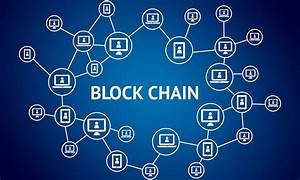Blockchain is a distributed ledger technology that allows for secure, transparent, and tamper-proof transactions. It is a shared database that is maintained by a network of computers. Each block in the chain contains a record of transactions, and each block is linked to the previous block using a cryptographic hash. This makes it very difficult to tamper with data in the blockchain, as any changes would be immediately evident to all participants in the network.
Blockchain has the potential to revolutionize many industries, including healthcare, finance, supply chain management, and government. In healthcare, blockchain could be used to securely store and share patient data. This could improve the quality of care by giving doctors and other healthcare providers access to up-to-date information about their patients. Blockchain could also be used to track the movement of drugs and medical devices, which could help to prevent counterfeiting and ensure the safety of patients.
In finance, blockchain could be used to create a more efficient and secure way to conduct transactions. For example, blockchain could be used to create a global, real-time settlement system for financial transactions. This would reduce the risk of fraud and errors, and it would also make it faster and cheaper to move money around the world.
In supply chain management, blockchain could be used to track the movement of goods from the point of production to the point of sale. This could improve efficiency and transparency in the supply chain, and it could also help to prevent counterfeiting and ensure the quality of goods.
In government, blockchain could be used to create a more transparent and accountable system for recording and managing government data. This could improve public trust in government, and it could also help to reduce corruption.
Blockchain is a powerful new technology with the potential to revolutionize many industries. It is still in its early stages of development, but it is already being used by a number of companies and organizations around the world. As blockchain technology continues to mature, it is likely to have a major impact on the way we live and work.
Here are some of the benefits of blockchain technology:
- Security: Blockchain is a very secure technology. It is very difficult to tamper with data in a blockchain, as any changes would be immediately evident to all participants in the network. This makes blockchain ideal for storing sensitive data, such as financial information or medical records.
- Transparency: Blockchain is a transparent technology. All transactions that take place on a blockchain are recorded in a public ledger. This means that anyone can view the data, which helps to build trust and transparency.
- Efficiency: Blockchain can be used to create more efficient processes. For example, blockchain can be used to create a global, real-time settlement system for financial transactions. This would reduce the risk of fraud and errors, and it would also make it faster and cheaper to move money around the world.
- Cost-effectiveness: Blockchain can be a cost-effective solution for many businesses. For example, blockchain can be used to reduce the need for intermediaries, which can save businesses money.
Here are some of the challenges of blockchain technology:
- Complexity: Blockchain is a complex technology. It can be difficult to understand and implement.
- Regulation: Blockchain is a new technology, and there is still a lack of regulatory clarity around it. This can make it difficult for businesses to adopt blockchain technology.
- Energy consumption: Blockchain can be energy-intensive. This is because every time a transaction is made on a blockchain, it requires a significant amount of computing power.
- Scalability: Blockchain can be difficult to scale. As the number of users on a blockchain network increases, the network can become congested and slow.
Despite these challenges, blockchain is a promising technology with the potential to revolutionize many industries. As blockchain technology continues to develop, it is likely to overcome these challenges and become a more widely adopted technology.














